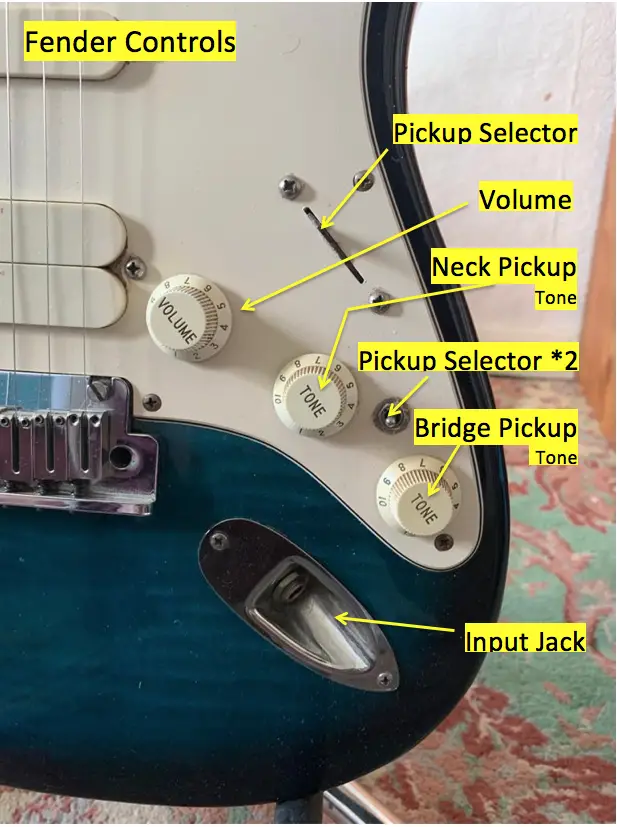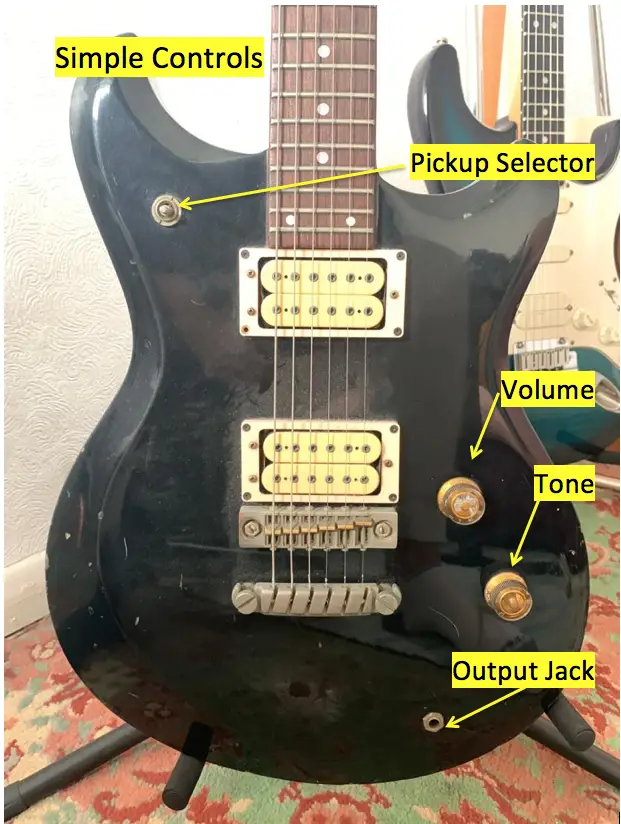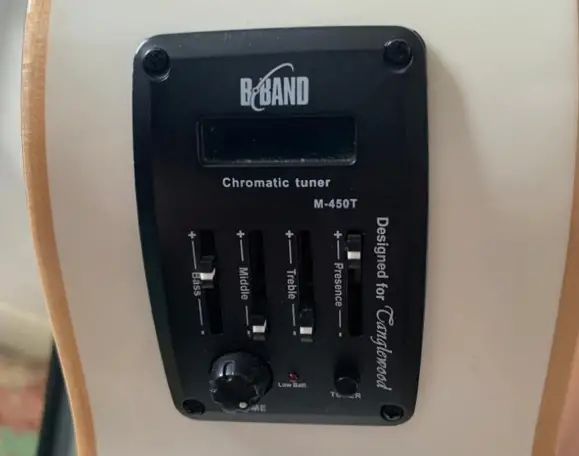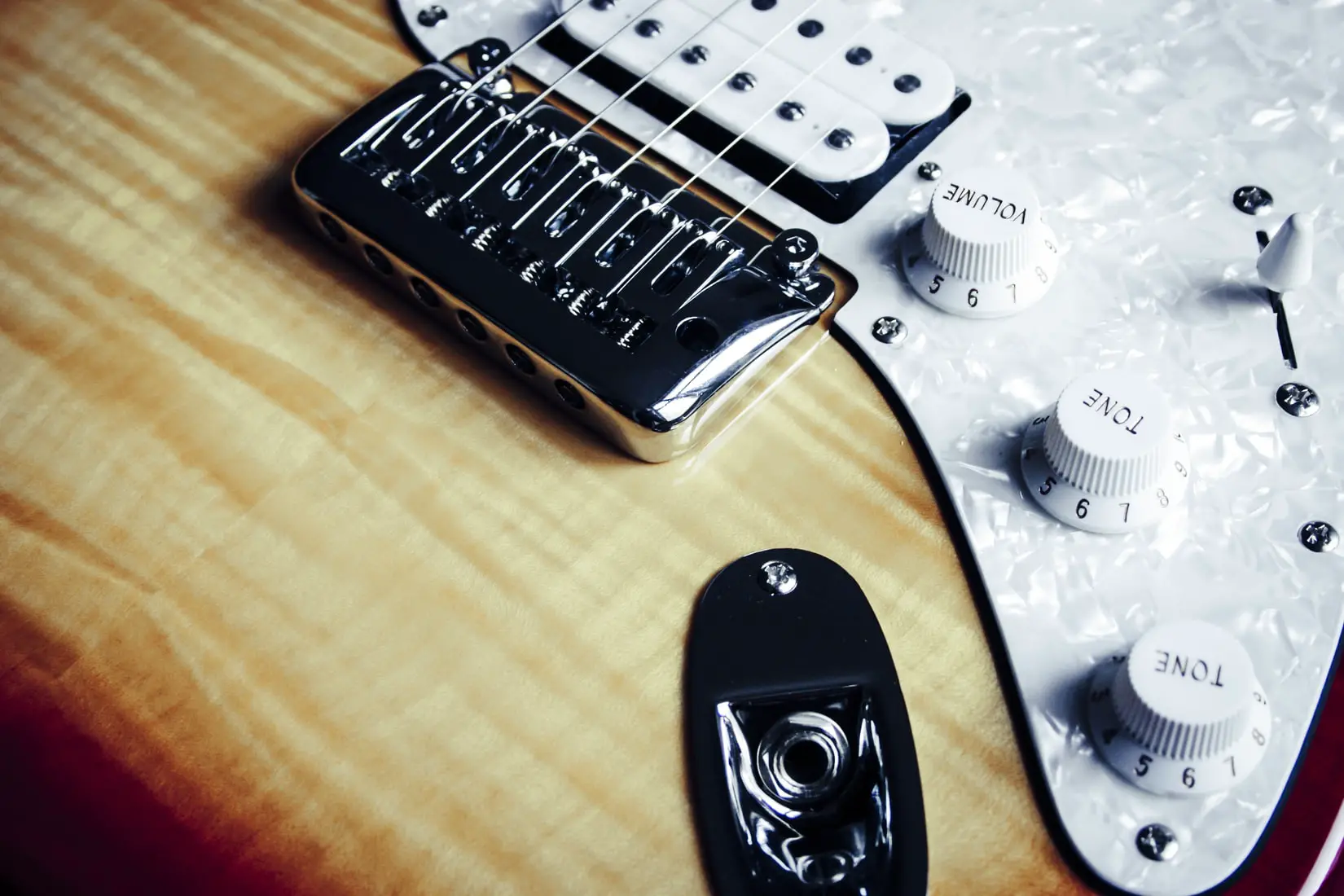The Electrics on a Guitar can have many functions and so it is important to understanding what they do to find your sound.
What do the controls do on an Electric Guitar? There are generally three controls on an electric guitar. These include a “pickup switch” for changing between the neck and bridge pickup, a “Volume knob” for adjusting the volume output to the amp, and a “tone Knob” for adjusting the treble frequency output.
[amazon box=”B07S6B26QT”]
In this article, I will go over these controls in more detail and answer common questions that you may have to ensure that you are not limited to getting that ideal tone.
1. What do the Knobs on my Electric Guitar Do?
Generally speaking, all electric guitars will have a Volume knob controller and a tone knob controller installed with a pickup selector switch. The volume will adjust how loud the output is, whilst the tone knob will filter; (increase/decrease) the amount of treble that is passed through the audio output. The pickup up switch will change between pickups.
Fender Design

Les Paul Design

Other Designs

Depending on how your guitar is wired, you may find that your guitar either has:
- One volume knob and two tone knobs (Fender Strat Design)
- Two volume knobs and two tone knobs (Les Paul Design)
- One volume knobs and one tone knobs (Ibanez & other)
As you can see from the Fender design each tone knob controls the individual pickups (isolated controllers) whilst the volume knob controls the whole output at once (master controller). The Les Paul design is slightly more flexible with two volume knobs and two tone knobs as you select through the pickups.
Master Controlled Vs. Isolated Controlled
The volume and tone controls can come in many forms depending what brand your guitar is, or how it is set up. However, the two most common set ups include isolated controller or master controller. These two setups each have their pros and cons but it is really down to the guitar player’s preference to decide what they want.
Master Controller
Master controller is the most common and you may have seen them used on Les Pauls. This works by having a single knob that controls the setting for both pickup positions at the same time. This works by serving the same output to each pickup with using only one dial.
I feel too many knobs can get ugly and I personally prefer my guitar body to be less cluttered so I am taken to a simpler setup. Having master controller does make life simpler with just having one volume knob and one tone knob. If you are like me then I always have my tone and volume on full when switching through my pickups.
Isolated controller
If there were a situation whereby I will need to isolate each pickup then I would definitely recommend a volume/tone knob for each pickup. This means that you can configure your tone/volume settings individually and so when you decide to switch through the pickups then you will not need to keep changing the settings.
For example, you may have a set up whereby you have individual controls for each pickup. This would usually include two volume knobs and two tone knobs and 1 switch.
2. What do the Controls on my Electric Acoustic Do?
There are two types of acoustic pickup system. You have the standard
The standard acoustic pickup system will capture the acoustic volume and convert it into an electrical frequency that can be amplified through a speaker system. Then there are the more advanced microphone based systems that pickups more range of frequencies (however you will generally control these with a PA system with an external pre amp).

Acoustic Controls
- Volume: controls the master volume output
- Tuner: Most modern acoustic controls have a built in tuner
- Presence: controls the upper high frequencies
- Treble: controls the high frequencies
- Middle: controls mid range frequencies
- Bass: controls low frequencies
- Multi-band EQ: some of these pickup systems even have equalizers built in to have more control of your tone
Upgrade your acoustic pickup system with a microphone based system
[amazon box=”B08375BNF8″]
3. Why are the Controls on my Electric Guitar Important?
The knobs on electric guitar controls the signal output from your guitar. Whether this is volume, tone, killswitch or a humbucker switch, you will need to have the correct setup for your playing style.
In some special cases, there are guitars without a volume they are wired for the volume to always be on full. You would require a pedal to control volume this being your setup.
On my personal setup I do not have a tone, instead I have knob that controls the amount of humbucker to the single coil I want present in my sound. I like to riff using single coils and solo on a humbucker. I also, have these controls isolated to each pickup so I have full humbucker on my bridge pickup for soloing and part single coil for riffing.
Furthermore, if you are like the legend buckethead and want some crazy tech/stutter effect then you will have to install a ‘kill switch’.
4. What are the Types of Effect Controls
There are many types of controls you can add to your guitar, below we talk about the main ones.
Pickup Switch
The first thing you do when adjusting your settings is selecting the pickup. This can be either the neck pickup, bridge pickup or middle pickup.
The bridge pickup position produces a much thinner tone as the amplitude is less bass in the bridge position. This makes the sound ideal for doing riffs or playing chords.
The Neck position produces thicker sound as the amplitude is more bass and higher Mids. This makes the sound ideal for single notes like solos as it thickness out the tone.
The middle position is somewhere in-between. Let us say you want to play a solo but you are finding the tone a little too thick then you might want to switch into the middle pickup position. This also works the same for paying chords or riffing. Sometimes the bridge position can feel too thin and twangy, and so changing to the middle will tighten the tone right up.
Volume
The Volume knobs control the output of one, two, or all pickups.
Tone
Most guitars will have at least one TONE knob – a way to adjust the frequency spread of the signal going to the amplification system. Similar to a TONE adjustment on radios, stereos, other things; it usually is a means to adjust how much of the higher frequencies are sent to the output. Rolling the knob “back” will reduce the higher frequencies and can help make the guitar sound less “shrill” if it exhibits that tendency. Tone knobs control how much treble passes through, from all to a little.
Humbucker
Being able to switch from single coil to humbucker, my setup has a humbuckers switch that has four setting. The lowest setting is single coil whilst the highest setting is full humbucker. As you go through the settings, you increase the intensity of the humbucker.
Kill Switch
A kill switch cuts the volume off when turned on, when used correctly you can get some really cool effects.
Distortion
You can have built in effects like distortion that is fixed inside the guitar itself. This very cool modification but you will have to customise this yourself. Guitarist Alexi Laiho is known for having this particular setup.
5. What are the Types of Setting Options?
You will find that there are thousands of different styles of guitars on the market. However, when it comes down to the electrics there are four designs that are common. As discussed the knobs control the pickup, volume and tone and you will experience four setups.
Four Knob Setup
A four-knob setup will include one tone and one volume knob for each pickup, totalling to four knobs.
Three Knob Setup
A three-knob setup can vary depending what brand you get. For a dean and flying V will include two volume knobs that control the volume output of each pickup, and then one tone control to alter the bridge and neck pickup at the same time.
For a Fender a three-knob setup will include two knobs for tone. This will include controlling one tone knob for the neck pickup, and one tone knob for the middle and bridge pickup. Whilst there will be a volume knob that controls all three pickups at the same time.
Two Knob Setup
A two-knob setup includes only having one volume and one tone knob to modify both pickups. This is what we commonly see on telecasters. I personally like this setup, as it is minimal and simple for any novice to understand.
Push-Pull Setup
A push-pull knob works slightly different to the other controls we have discussed. These work by pulling, or pushing the knob will give to access to a different setting and then further settings can be applied to modify the selected setting.
For example, some guitars will have a setup where you pull the knob and it will switch the pickup from humbucker to single coil. Other guitars like the Fender S1 switching system design will change the selector when you pull it. This means if in the pull position you can alter tone, and when in the push position you can alter volume.
Conclusion
In this post, we went over the controls of a guitar and learnt what the controls do and how to use them depending what guitar design you have.

